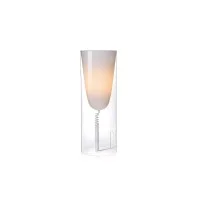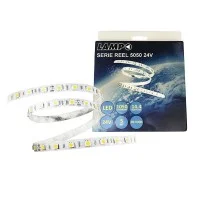Color rendering index (CRI) what it is and what advantages it brings
The color rendering index (CRI) is a very important indicator to take into consideration when choosing lamps. In this article we will therefore go into detail to understand what this index is, how it works, also reporting various examples so as to understand exactly its role in lighting.
What is Color Rendering Index (CRI)
It is a parameter that measures the ability of a light source to reproduce colors faithfully and naturally. Precisely for this reason it is an aspect that cannot be overlooked when choosing new light bulbs, especially in those settings where the quality of light has a significant impact, such as the lighting of a shop, a home , museums or offices.
How the color rendering index CRI works
The color rendering index CRI is calculated by comparing the colors reproduced by a light source with those reproduced by sunlight. CRI is rated on a scale from 0 to 100, so light sources with a higher CRI reproduce colors more accurately than light sources with a lower CRI.
A light source with a CRI lower than 80 is considered low quality, while a light source with a CRI higher than 90 is considered high quality. So a light source with a CRI of 80 or higher is generally used for domestic lighting, where the light is left warmer and more relaxing, while a light source with a CRI of 90 or higher is used in rooms where the quality of light is particularly important, such as shops, studios or offices.
Clearly the color rendering index CRI is only one of the parameters for evaluating the quality of lighting, there is also the color temperature, the spectral distribution of the light, the luminance, the uniformity of the light, etc.
There are many lighting solutions with a high color rendering index CRI, such as LED lamps, compact fluorescent lamps and incandescent lamps. The cost of these luminaires is slightly higher than a light with a low CRI, but the improvement in the quality of the light and the resulting results justifies the investment.
Pro of the color rendering index CRI
A light source with a high color rendering index CRI allows you to more accurately distinguish the colors and details of the illuminated surfaces. For example, in a clothing store good color rendering is essential to allow customers to correctly evaluate the colors and shades of the fabrics.
A red object if illuminated with low color rendering light, will appear dull and orangey or pink. On the other hand, when illuminated with a high color rendering light, the red of the object will appear intense and vivid, with all the nuances of the color well defined.
Therefore, not only does the color rendering index improve our perception of colors but it also allows us to recognize more details of a setting or an object. In offices, for example, where many hours are spent in front of computers, having good lighting is essential to avoid eye strain, thus improving productivity and reducing stress. In fact, it has been shown that good lighting is associated with greater job satisfaction and a reduction in tension.
In summary, the color rendering index CRI is an important parameter to consider when choosing a light source for both domestic and working settings.
To choose a light source with a high CRI, you can consult the technical specifications of the product or ask us for advice from the professionals of the trade.
Do not hesitate to contact us on our Light Diffusion website for more information!
Written by Alice Pruccoli
Share this content





























